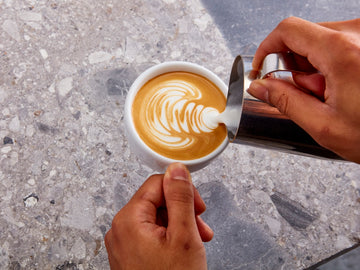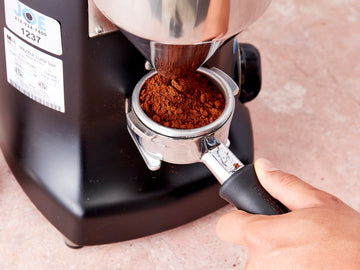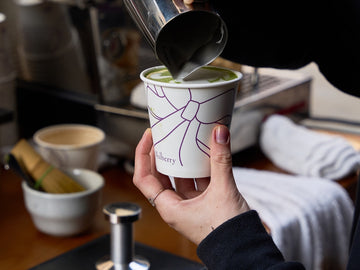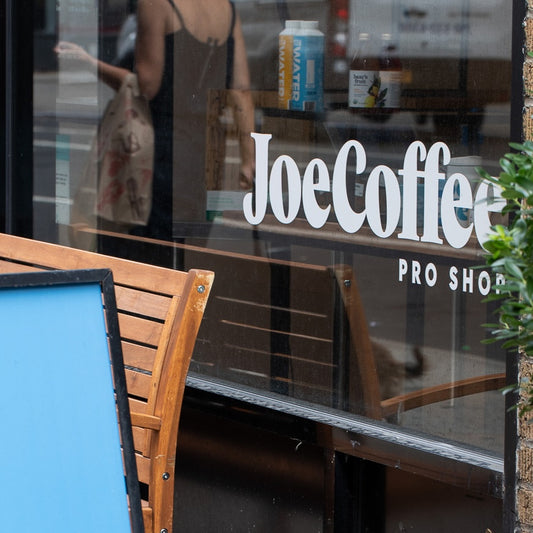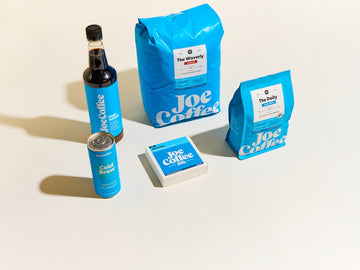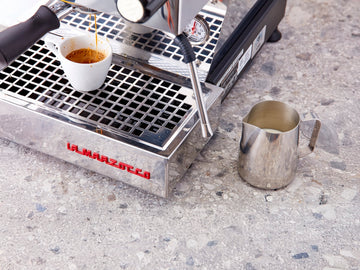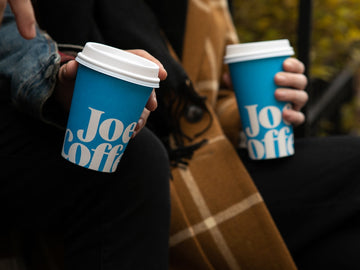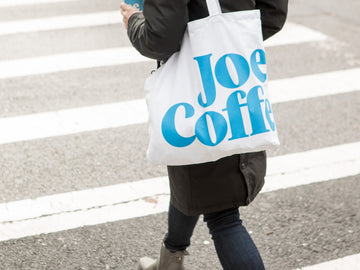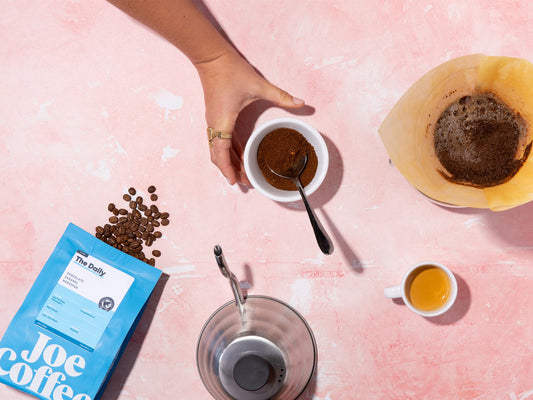All Articles
Categories
All articles
Working Towards Becoming an Anti-Racist Company
Thursday, June 18th, 2020To everyone at Joe,Two weeks ago, I wrote you a letter voicing Joe’s support for the Black Lives Matter protests, with the promise to examine our company’s role in dismantling racism and confronting white privilege. Since then, we’ve begun to engage in deep reflection and discussion, and have carefully considered the thoughtful feedback so many of you have shared in response.When I founded Joe, my vision was to create a welcoming space that celebrates great coffee and everyone who loves it. As I reflect on our history, I think of all the folks who have found safe haven in Joe, finding a sense of belonging that they were not able to find elsewhere. However, I realize that despite our best intentions, we took a passive approach to challenging racial inequity, thinking Joe was immune to bias. The reality is that racism is not always overt—it can manifest itself in subtle and equally harmful ways, and we acknowledge our own complicity in perpetuating institutional racism.It’s time for us to dig deep, confront our historical policies and behaviors, and work to actively design our company systems and processes to champion racial equity. To that end, I want to share the early beginnings of how we’re approaching this work.Listening & Education:Before we can take meaningful steps towards long lasting change, we need to first look inward, listen, and learn. This means reckoning with past harms, understanding the lived experiences of folks in our community, and confronting how bias affects us as individuals and in our business operations. We respect that the onus is on us to educate ourselves, but want you to know that we are listening, and we are committed to holding space for challenging conversations. This is work that we must do, as an employer, to genuinely be in service of our staff.Here’s where we are starting:
In an effort to respect the boundaries of our staff while also providing a platform to participate, we have created an anonymous submission form. This form can be used to share experiences that have made folks feel discriminated, marginalized or othered in the workplace, ideas for policy change or new practices to implement, or general feedback. We understand it is unfair to rely on our most affected staff to tell us how to change and that any insight into those experiences is a gift, but we also feel it is necessary to give an outlet for those who want to share.
Create a repository of anti-racist educational resources and facilitate dialogue
Require training on unconscious bias for all employees
Address coffee’s roots in colonialism and slavery through our education program
Policy:We can’t create a welcoming place for our BIPOC employees to grow professionally without taking a critical look at our internal policies. Although policy reform will surely be a continuing conversation, we will immediately work on:
Fully auditing our employee handbook and company policies with an anti-bias lens
Reviewing our in-store safety, conflict resolution, and escalation procedures
Recruiting & Hiring EffortsWe have always cherished diversity on many levels at Joe, and yet we have much more work to do, especially when it comes to diversity in middle and upper management. Black and Brown folks are significantly underrepresented in our industry and the specialty coffee community has not done enough to change this. We believe in making coffee more approachable to everyone, and we will play an active role in building better representation by:
Connecting with more diverse candidate pools and partnering with community organizations dedicated to the professional development of BIPOC
Examining our hiring practices and investigating blind hiring methods where ethnic/gender/age/class signifiers are omitted from resumes
Training interviewers to erase potential bias
MarketingWe spend a lot of time thinking about inequities throughout the coffee supply chain and finding ways to communicate these complexities to our staff and customers, often focusing on stories about our current producer partners in our marketing. However, coffee has a history of colonialism and inextricable links to the slave trade—these less “palatable” parts of history often don’t make it into the narrative. We understand that it is our duty to tell the full story, and we intend to engage with these truths better in our storytelling.Moving Forward & Staying AccountableIn January, we established a cross-departmental culture working group called the Joe Cultural Advocacy Team (J-CAT). The purpose of this group was to pave the way for conversations about how Joe, as we grow, can be a better employer for all Joeys. Because COVID-19 forced us to reduce our business to a skeleton crew, many of the members of this team were temporarily laid off. In an effort to immediately begin building a roadmap for change in the interim, we formed an anti-racism task force in the week following our initial statement. This committee will be responsible for overseeing this work until we are able to partner with J-CAT again to carry the work forward. Until then, we intend to meet regularly to advance discussions, establish goals, and build timelines. Clearly, there is a lot of work ahead. Our next steps may include missteps, but we won’t let up. I am hopeful that with the help of the entire Joe family, we will become a truly anti-racist organization, an embodiment of the original vision for Joe Coffee.Jonathan
A Letter from our Founder
Friday, June 5th Dear Joe,I want to take a moment to acknowledge the pain all of us are feeling over the injustices of the last week.George Floyd's senseless death added another name to a long list of victims of systemic racism and police brutality, awakening a long pent-up fury in communities across the country.I want you to know that I share in this outrage and that Joe stands in unequivocal solidarity with those marching in the streets for Black lives. https://frpiluleenligne.comTo witness these mounting injustices, including the treatment of innocent protesters this past week, has been deeply troubling.For this to happen while we as a country are dealing with the trauma of the covid-19 pandemic, adds to the pain.However, I recognize that the pain we feel in this moment is insignificant in comparison to the suffering inflicted against Black people in this country for generations.Our own role as a company in condemning and dismantling racism is not lost on me, and I realize we have likely not done enough.I am committed to ensuring we do better.This will involve a lot of listening, learning (and unlearning), and difficult, introspective conversations.It will involve taking stock of our own values, of which "community" is one, putting them into practice and holding ourselves accountable to them.While it's evident that radical change is needed, as a business that is simultaneously reckoning with the dire financial realities of surviving this pandemic, we at Joe Coffee have to ask ourselves: what meaningful actions can we take in this moment, and what work can we do to ensure that we emerge on the other end of this pandemic a business that is actively contributing to long lasting change?Make no mistake: public statements and donations matter today, but the work of becoming anti-racist is ongoing.The road ahead is long, and progress will not come without mistakes along the way, but the key is to keep forging ahead with an open heart.Right now, we are actively listening and taking time to educate ourselves.We commit to examining our employee handbook, our policies, and our own unconscious biases, actively engaging with you, our team members to create avenues for dialogue, and collaborating with our community at large.Joe Coffee will always be a place where everyone is welcome, and everyone belongs. This means you all have a voice here. I invite you to share your feedback about diversity: whether they are issues you think need to be examined, or ideas about how we can do better. Jonathan
Bright Tomorrow Iced Coffee: a Seasonal Drink You Can Make at Home
One of our favorite parts of the changing seasons in New York is the opportunity to capture the essence of the weather in our rotating featured seasonal beverage. We get especially excited about this because all of our drinks are selected through an in-house competition, with Joeys from across our community entering their own creative conceptions. It’s a way for us to celebrate not only our city and our coffees, but also our people. The final privilege is sharing these delicious drinks with our customers. Since current circumstances are preventing us from sharing this joy with you all in person, we decided to come up with an easy to make at home seasonal drink so folks can still enjoy a pick-me-up when we all need it most. Usually our seasonal beverages are espresso based, building upon our Waverly Espresso but we decided to shift gears this season to make this drink something anyone can make at home while highlighting a coffee that is near and dear to our hearts, the Rwanda Ejo Heza.
You can read more about why the Ejo Heza is special to us on the here, but the vibrant and mouthwatering flavors of stone fruit and custard with intoxicating florals make it a perfect fit for welcoming springtime in the city.
In our Bright Tomorrow Iced Coffee we pair flash brewed iced coffee with a cardamom-rose syrup to complement the fragrance and complexity, and just a splash of lime juice to boost the vibrancy. All of this is shaken together to give the drink a silky mouthfeel and served with a twist because we all deserve a treat right now. Bright Tomorrow Iced CoffeeIngredients:
6oz flash brewed Rwanda Ejo Heza*
¾ oz cardamom-rose syrup (see note)
¼ oz lime juice
Lime peel, for garnish
Directions:
Add iced coffee, cardamom-rose syrup and lime juice to a cocktail shaker with ice and shake vigorously for 15 seconds.
Double strain over fresh ice into a collins glass or your favorite drinkware. For an effervescent touch, top with seltzer water.
Express a lime peel and garnish with a twist
* See our Flash Brewed Iced Coffee Recipe here (makes approximately 17 oz)Note:
Cardamom-Rose SyrupIngredients:
1 cup raw sugar
1 cup water
5g whole green cardamom pods
5g dried rose petals
Directions:
Mix the water and sugar in a saucepan and set it over medium-high heat, stirring until the sugar is dissolved.
Gently crush the cardamom pods in a mortar and pestle.
Once the simple syrup is nearing a boil, add the cardamom and rose buds, reduce the heat and cover. Let the mixture simmer gently for 15 minutes.
Strain the syrup and let cool before storing in the fridge.
How to Make Flash Brewed Iced Coffee
Over the past few years cold brew has emerged as one of the most popular ways to drink cold coffee, and rightly so as cold brew offers a unique flavor profile that highlights the bass-ier tones of a coffee, shining a light on chocolate and caramel flavors alongside an emphasized body and moderated acidity. However for coffee drinkers looking for a brighter, more aromatic profile a method called "flash brew" is a great option, and one that is easy to make at home.
Flash brewing essentially involves brewing a strong cup of hot coffee and diluting it with ice, which rapidly drops the temperature (flash chills) and brings the strength into balance. This kind of approach isn’t necessarily new, restaurants and diners have been icing old pots of hot coffee for tomorrow's iced forever, but the key differentiator in a flash brew recipe is the built in dilution, ensuring the final result is not only cold but delicious. We typically recommend starting with a 1:16 brew ratio for hot filter coffee as this produces a sweet and balanced cup, but diluting this further with ice would drop the strength too low, and the sensations of sweetness, complexity and freshness would all be lost. In order to retain as much of the origin flavor as possible, our flash brew recipe calls for a significantly stronger brew ratio in tandem with a finer grind and extended bloom to achieve a proper extraction and high strength so the dilution won’t negatively impact the final cup. The finished brew is made with a ratio between 1:14 and 1:15, but only 60% of our water weight is actually used to brew the coffee with the remaining 40% coming from the ice added at the end. This means we’re brewing below a 1:10 ratio prior to dilution!
This recipe can be scaled up to produce larger batches, though we strongly recommend making it fresh the day you plan on enjoying it, but there’s a bit less wiggle room in scaling down. Since only 60% of the water weight is being used in the brew, contact time (how long the water and grounds are mixed together in the brewing process) is at a bit of a premium. If the brew becomes too small, you’ll need to use too fine of a grind which can contribute muddy and bitter flavors.
Finally, while our recipe is designed to use the Kalita Wave, flash brewed iced coffee can be made with a variety of methods, including other pour over devices like the Chemex, an automatic drip machine or even immersion methods like the French Press or Aeropress by replacing roughly 40% of the brew water with ice and adjusting the dose and grind. Happy brewing! Flash Brewed Kalita WaveYou’ll need:
Kalita Wave 185 brewer, filter & decanter
35g of coffee, ground finely
300g of water, 208° F
200g ice
Scale
Timer
Spoon
Weigh 35g of coffee and grind on a fine setting similar to table salt. Set up the Kalita Wave, filter, and vessel on the scale. Heat water in the kettle to 208° Fahrenheit.
Gently pour hot water into the center of the empty filter. Continue pouring in a spiral outwards to wet the entire filter. Be careful not to pour too hard as the filter can collapse. Empty the water from the vessel, place back onto the scale, and tare to zero.
Add the coffee to the Kalita Wave with the vessel on the scale, ensuring that you add 35g of ground coffee, and tare to zero.
Start the timer and add 70g of water to the bed of coffee quickly, in about 5 seconds. Stir the bloom with a spoon a few times ensuring all of the grounds have been saturated and mixed. Let the coffee bloom for one minute.
When the timer reads 1:00, start pouring in the center and spiral out in concentric circles with a strong flow. It's okay to pour onto the filter walls if grounds are clinging to the paper. Continue pouring until the scale reads 150. This should take roughly 10 seconds. Let the slurry drain for roughly 10 seconds, or by about half an inch.
When the timer reads 1:20 quickly add another 50g of water to raise the level again and bring the total brew weight to 200. This should take roughly 10 seconds. Let the slurry drain for roughly 10 seconds, or by about half an inch.
When the timer reads 1:40 quickly add another 50g of water to raise the level again and bring the total brew weight to 250. This should take roughly 10 seconds. Let the slurry drain for roughly 10 seconds, or by about half an inch.
When the timer reads 2:00 quickly add the final 50g of water to raise the level again and bring the total brew weight to 300. This should take roughly 10 seconds. Let the slurry drain completely. This should take between 45 seconds and 1 minute.
When the slurry has drained completely, remove the brewer from the decanter and tare the scale so that it reads zero. Add 200g of ice to the decanter and stir to incorporate.
Flash brewed iced coffee is ready to drink as is or over fresh ice. Enjoy!
We're Reopening!
May 18th, 2020To the Joe Coffee Community,It’s been two months since we closed our doors, and we have missed you so! Over these last few weeks, we have been carefully considering how to reopen and serve you safely. Now, after several weeks of planning, we are excited to reopen select locations for contactless pickup beginning Wednesday, May 20th, starting with our Bryant Park Kiosk and Pro Shop.As locations begin to reopen, we will update this list:Wednesday, 5/20:
Bryant Park: 9am–5pm, every dayPro Shop: 9am–3pm, Monday–FridayWednesday, 5/27:
Long Island City Roastery Cafe: 8am–4pm, every dayThursday, 5/28:
Union Square West: 8am–4pm, every dayWednesday, 6/3:
Waverly Place; 8am–4pm, every dayLexington; 8am–4pm, every dayWednesday, June 10
Brooklyn Heights; 8am–4pm, every dayW 85th & Columbus; 8am–4pm, every dayWednesday, June 15
W 73rd & Amsterdam Avenue; 8am–4pm, Monday–FridayW 68th & Columbus; 8am–4pm, every dayThe Counter at Todd Synder; 8am–4pm, Monday–Friday, 8am–3pm, Saturday & SundayWednesday, June 24
Chelsea; 8am–4pm, Monday–FridayWe will be taking orders in advance via Ritual for contactless payment and pickup. To order, click here, or find the “Order Pickup” button on our website’s main navigation menu as of May 20th.Our full coffee menu will be available along with a limited pastry menu from our friends at Ovenly and Bien Cuit. We’ll also be offering coffee beans for pickup—including new releases Burundi Kibingo and Rwanda Ejo Heza—to keep you stocked up at home. As always, we’d be happy to grind it for you—be sure to select your preferred grind setting when you place your order.All orders will be available for you to pick up from a table positioned near our front door so you can safely gather your order. Don’t forget to wear a mask when you stop by!Protecting the health of the Joe community is our first priority and we are committed to putting safety first every step of the way. In addition to enhanced cleaning procedures, we will be implementing several precautions to protect our staff, including social distancing within our cafes, temperature checks, providing PPE, and working closely with vendors to ensure safe deliveries.As excited as we are to be brewing again, we think it’s important to take things slowly and carefully. We’ll keep you updated as things evolve, and we thank you for your cooperation in adjusting to this new normal with us. We’re grateful to all of you for your continued support and good wishes these last few weeks. You mean the world to us and we are so looking forward to welcoming you back!
How to Make Cold Brew Coffee: Recipe & Tips
Jump to Recipe
Every year as the weather slowly starts to warm up there are small luxuries that help us mentally usher in and embrace the changing of the seasons, and one that can feel especially hard-earned after a New York winter is the first homemade batch of cold brew. While we always have traditional iced coffee, cold brew and nitro available in our cafes year round, there’s a certain poetry to Cold Brew season. Not only can making cold brew at home feel like a victory against darker days, it’s also one of the easiest ways to enjoy truly delicious coffee at home. While we have brew guides available for a wide range of brewed coffee options to help make cafe quality coffee accessible outside of the cafe, it doesn’t get any easier than set-it-and-forget-it.
Before we get into the specific recipe for cold brew, let’s first talk about how and why it works. There are literally hundreds of aromatic compounds in coffee that play together to impact how we experience flavor in a brew cup of coffee. These flavor compounds begin developing in the coffee beans themselves as they mature and ripen on the plant and are being built upon and manipulated throughout their journey from harvest to roasting and finally, brewing.
Not all flavor compounds in coffee extract under the same conditions or at the same speed, meaning how we brew our coffee has a massive impact on how we structure the flavor compounds inherent in the beans we’re using. Aside from making the process of dialing in a coffee incredibly fun and quite a rabbit hole, this also creates some rules we can follow.
Many of the flavor compounds in coffee are much more soluble at higher temperatures, meaning hot water will extract them much faster than cold water, and there are even some compounds that simply aren’t soluble below a certain threshold. So if we’re swapping out water in the 195-205°F range for water in the 50°F range, the timeline of extraction is going to change significantly. By extending the brew time from a typical hot brew of about 5 minutes to roughly 18 hours, we’re going to give some of those more stubborn compounds time to work their way into the brew. However, if all we changed was the brew time and kept the grind and ratio the same, we’d end up with a final product that was weak, bitter and flat, because the less stubborn, more soluble compounds would be contributing too much, imparting off flavors and lacking in complexity. By coarsening our grind and working with a much higher coffee to water ratio in addition to the extended brew time, we’re able to produce a final product that is rich and sweet, with a subtle balance of bitterness and acidity.
As with smaller scale filter brewing, the variables of brew time, grind size and ratio all work together, and changing one usually requires a change to at least one of the other two variables, unless you’re looking to produce notably different results. Our recipe is designed to steep between 16-18 hours and produces a concentrate meant to be diluted 1:1 with either milk, a milk alternative, or water. If you want to shorten that steep time, you can grind slightly finer and if you want to extend it, go slightly coarser. Steeping for too long (over 24 hours) or not long enough (under 12 hours) won’t have the same balance and perceived sweetness, but that still leaves some room to work with your schedule. That said, 16-18 will yield the best results.
Recipe
12oz Great Heights, ground coarsely, like Himalayan rock salt
64oz filtered water
A vessel to steep in, larger than 2L
Sieve or mesh strainer
Cheesecloth or jam/nut milk bag (optional)
Instructions
To start, mix coffee and water in a vessel large enough to accommodate both (a 1-gallon glass jar works well) and make sure all of the grounds are saturated by giving the jar a good stir.
Seal the jar tightly to prevent the cold brew from oxidizing too much during the brewing process and store in the refrigerator. We strongly recommend storing your cold brew in the fridge while it steeps. It’s true that cold brew can be produced at room temperature, but this can lead to inconsistent batches (if the ambient temperature changes) and also speeds up the process of oxidation, which is effectively the staling process. Brewing in the fridge will produce tastier, more consistent results and will lead to a slightly longer window of enjoyability.
The following day, between 16-18 hours from when you started your batch, pull it out of the fridge. Set a strainer over a vessel that’s at least 64oz, and carefully begin pouring the cold brew through to filter out the grounds. If you want a cup with less particulate, you can line the strainer with cheesecloth, or filter the batch a second time through a jam or nut milk bag. Filtering through coffee filters is an option, but be warned it can take upwards of hours to finish. Once you’ve filtered your batch to your satisfaction, you’re done!
Enjoying & Storing
You’ll have a little under half a gallon of concentrate that was produced with 3 times as much coffee to water as our standard drip recipe, so it’s pretty darn strong. We recommend storing the concentrate as is and diluting per serving. This will help extend shelf life, but also means you can make tweaks. Start by diluting the concentrate 1:1 with water, milk or a milk alternative. You can alter the ratios to your preference. If you play around a bit and still feel like it’s not exactly where you want it to be, look to make a change to your brewing, starting by grinding slightly finer or coarser to strengthen or soften the brew intensity. We’d only recommend shortening or lengthening the brew time outside of 16-18 hours if your schedule requires it.
This concentrate will last in the fridge for 7 days, but you may notice the flavor change day to day. Storing the cold brew in a vessel with as little headspace as possible will help it taste fresher longer.
Our Tips for Better Home-Brewed Coffee
For many of us, brewing coffee at home is not only a necessary step in getting our day started, it's also a rewarding daily ritual, a moment of mindfulness. Whether you're new to brewing at home or you're regularly tweaking your recipe in pursuit of the perfect cup, there are a few simple concepts that will help you master the art of the home brew.To get started, pick your brew method and take a look at our brew guides for Chemex, Kalita Wave, Aeropress, Hario V60, and espresso. Each guide provides step-by-step instructions for tried and true recipes specific to each brew method. Beyond straight technique however, there are other variables that can impact the success of a cup, so we have delved into each of these factors in this guide to lend a helping hand to all of you home baristas out there.This guide is geared towards filter coffee brewing, but the same philosophies can be applied to espresso.
Coffee to Water RatioYour coffee to water ratio, frequently referred to as your brew ratio, is the building block of establishing good coffee brewing. If you use too much water to brew a fixed amount of coffee, you will over-extract your coffee, resulting in a cup that is bitter and weak. If you use too little water, you will get a brew that is sour and strong. However, with an appropriate brew ratio, it can be easy to produce consistently sweet and balanced coffees.So how do you achieve that appropriate brew ratio? We recommend weighing both your coffee and water to get the most precise brew ratio, but if you don’t have a scale at home and prefer to use volumes, this can work too. An industry standard jumping off point is 1:16—for every 1g of coffee, you’ll want to use 16g of water. Scaling this is super easy—if you know you have 25g of coffee you want to brew, just multiply that by 16 to get your water weight of 400g.If you know you want to brew a large batch of coffee—let’s say 500ml—just divide that by 16 to get your coffee weight of 31.25g (water is essentially a 1:1 conversion from ml to grams). While 1:16 is the most common brew ratio for filter pour over methods and batch brew, immersion methods like French Press and Aeropress typically work better with stronger ratios, closer to 1:14. Of course, if you find you prefer a slightly stronger cup, experiment with a 1:15 ratio, or perhaps 1:17 if you want a more delicate expression.
Grind SizeGrind size is one of the hardest aspects of a brew recipe to talk about because it can be extremely relative. Not only are we talking about the grinding of brittle, organic matter, which is nearly impossible to do with complete uniformity without mindbogglingly expensive equipment, but factors like wear-and-tear, temperature and roast level will all impact how a specific grinder behaves. Putting all of that aside, the grind size of your coffee has a large impact on the quality of your final brew and is one of the first things you can look to if you want to change how your coffee is tasting. A quick disclaimer—you’ll need a burr grinder in order to really take control of this variable. Burr grinders grind coffee between two discs (burrs) that shear the coffee to a specific size. While they’re imperfect as stated above, they are very good at producing even and consistent grinds. Blade grinders on the other hand function more like blenders, blindly hacking away at a mass of beans, leaving you with some coffee powder and some near-whole coffee beans. Uniformity of grind is the most important aspect here. If you don’t have a burr grinder at home, fret not—we can pre-grind coffee for you at our roastery if you select this option at checkout. We’ve done some informal taste tests and pre-grinding with a quality grinder produces better results than grinding fresh with a sub-par grinder every time.Grind size has a compounded impact on cup quality. When you grind coffee finely, you’re increasing the amount of surface area on every single particle in the coffee filter which will cause them to extract faster. When you coarsely grind coffee, the water has to worker harder to penetrate deeper due to a decreased surface area. This process is called diffusion. An analogy we revisit often in training is cooking garlic—mincing a glove of garlic is going to cause the majority of the clove to cook faster than if you tried to cook it whole, where the center would stay raw while the outside burns. But not only does the size of your grind impact how readily the coffee can extract but it also impacts how quickly the water can flow through the coffee. Another analogy—imagine you have two buckets, each with a hole in the bottom. If you fill one with sand and one with pebbles and dump a gallon of water into each, which one will drain faster? The sand is so fine that there’s little space between each grain, slowing the flow of water, while the pebbles will allow the water to pass more freely. The finer you grind your coffee, the slower the water will flow and the longer your brew will take. The inverse is true the coarser you go—the brew will be shorter because the water can pass more easily through the bed. So what does this all mean for dialing in the grind size for your brew method? Time and taste are your friend. If you’re finding that your coffee tastes harsh or bitter and is brewing slowly, try coarsening your grind. Don’t change anything else—that way you can see the impact of one variable at a time. If your coffee is tasting flat and weak and the brew is quick, trying going a bit finer.Brew TimeSo how long should your brew take? The brew method of your choice will determine the answer. For single cup pour overs, like the Hario V60 or Kalita Wave, anywhere from 2-4 minutes is acceptable depending on your recipe. We like to aim for around 3 minutes. For larger brewers like the Chemex, you should expect a longer brew. We aim for 5 minutes but some recipes extend closer to 7. This is because there’s a larger mass of coffee in the filter and the water is going to have to navigate tighter spaces to pass through.Bringing it back to grind size, as a general rule, the larger your brew, the coarser you should grind to account for this. Immersion brew methods like the French press or Aeropress are an exception to this rule. With these types of brews the grind size will affect how much the coffee extracts but it will not impact the brew time, since that is a predetermined part of the recipe.Putting It All TogetherGrab a bag of coffee and pick a recipe from our brew guides. Start by following the recipe to a T and have a taste. Most likely, the first adjustment you’ll look to make is to your grind, taking stock of the flavor and overall brew time. If you get the time right but the flavor could still be tailored to your preferences, consider adjusting the brew ratio. Keep in mind that coffee changes as it ages—the fresher the coffee, the more expressive it will be. As it ages over weeks and days the flavors will soften a bit. We recommend brewing and enjoying our coffee between 1-3 weeks from the roast date on the bag.
Protecting Our Community: Temporary Cafe Closures
From Jonathan Rubinstein, Founder & CEO
Released Tuesday, March 17 Dear Joe Coffee Community,In light of the most recent updates regarding the outbreak of COVID-19, we have made the very difficult decision to temporarily close all of our cafés until further notice. While we feel confident that this is the right thing to do for the safety of our staff and community, it doesn’t make the decision any easier.As of Wednesday, March 18th at 6PM, the following additional cafés will close: 13th Street, Bryant Park, Chelsea, Columbia Northwest Corner Building, Grand Central, Lexington Avenue, Pro Shop, Todd Snyder, and World Trade Center. As of now, we plan to close the remainder of our cafés—Amsterdam Avenue, Brooklyn Heights, LIC Roastery Café, Union Square West, Waverly Place, W 68th & Columbus, and W 85th & Columbus—on Sunday, March 22nd at 6PM.Of course, the implications of closing weigh heavy on our hearts—most importantly, how this impacts our loyal café employees. We are looking at every possible way to support them during this incredibly difficult time, including the creation of an Employee Support Fund. We know your baristas are an important part of your daily lives too, so stay tuned for information on how you can help.In the meantime, we know you will still need coffee, so we will continue to operate our roastery, shipping coffee, subscriptions, and brew gear nationwide from our Long Island City warehouse.This is uncharted territory for all of us, yet we remain hopeful that if we walk through this together, we will come out stronger on the other side. We are already counting the days until we can resume service and welcome back the smiling faces of our community again. Until then, we would like to share our gratitude for your continued support and wish you and yours a safe and peaceful passage through the weeks to come.Jonathan RubinsteinFounder & CEO
A Note to the Joe Coffee Community: COVID-19 Precautions
From Jonathan Rubinstein, Founder & CEO
Released Friday, March 13 (updated as of Saturday, March 14) Dear Friends,At Joe Coffee, the health and safety of our customers and our team members is of utmost importance to us. To this end, I want to share the precautions we are taking to ensure we are doing everything we can to protect the well-being of our community.Since the onset of the Coronavirus (COVID-19) outbreak, our dedicated task force has been meeting daily to monitor the rapidly developing situation and respond in accordance with guidance issued by the CDC and local authorities. These are the precautions we've put in place:
We are committed to offering our customers and team members a clean, safe, and hygienic space 365 days a year. However, in light of this situation, we’re taking heightened precautions including implementing increased sanitizing and more rigorous hand-washing procedures.
We have temporarily suspended to-stay ware as well as the practice of accepting personal cups. However, we will still honor the discount to anyone who brings in a reusable cup.
We have removed condiments, milks, lids, straws, napkins, etc. from our condiment bars in an effort to minimize potential contamination. Our baristas will be happy to complete your order with the milk or sweetener of your choice, and provide these additional items at your request.
We have suspended all cuppings for the public and staff until further notice. Any cuppings that are essential for Quality Control and business purposes will follow the SCA Modified Cupping Protocols.
While our public classes will continue as scheduled for the foreseeable future, if any registrant wishes to postpone attending a class, we will be more than happy to reschedule their ticket to a future date. Please email classes@joecoffeecompany.com to reschedule.
While we are currently operating our cafes as usual, we have modified our hours in certain locations, including our three Columbia University campus locations in response to school closures. For up-to-date hours, please visit our locations page.
(Updated: March 14) In an effort to support social distancing and reduce risk for our customers and staff, we have temporarily removed seating where possible, offering to-go only service.
In the spirit of transparency, we are committed to keeping you informed about any further changes and will share updates in this space.On behalf of the Joe Coffee team, I want to thank you for your patience, understanding, and trust as we navigate this uncertain—and certainly unprecedented—time together. We will strive to continue offering the welcoming spaces and warm hospitality you have come to expect from us—a safe haven for those who seek it. In this difficult time, we offer our entire community our sincerest wishes of good health.Jonathan RubinsteinFounder & CEO


